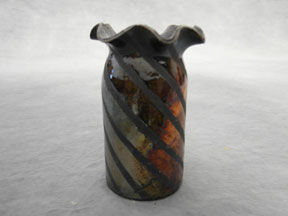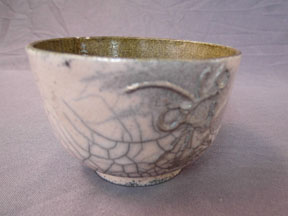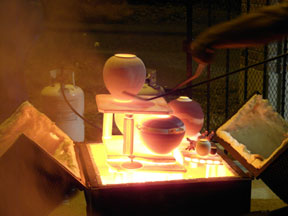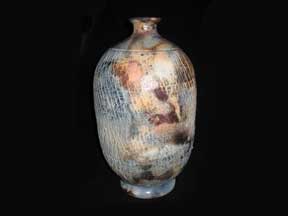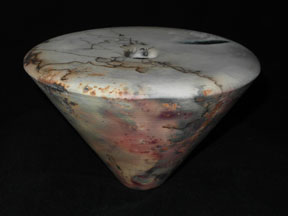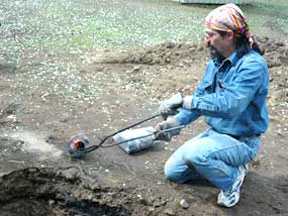Alternative Firing Techniques
Raku
Fired using the raku kiln and glazes at the Kirkland Arts Center. This firing produces iridescent and metallic colors. Clay bodies used are stoneware and raku clays. Because the piece is removed from the kiln at 1460 F, placed in a covered container with combustible material to cool for 20 minutes, and then quenched in water, the clay must be able to withstand an intense thermal shock. Because the clay body is not fully matured, additional sealing must be done if one desires the piece to hold water. Raku pieces are are purely decorative and not food-safe.
Pit Fire
Fired in a fire pit with wood, dry seaweed, coffee grounds, banana peels, dry vegetation, and mineral salts. Temperature in the fire has been shown to reach 1800 F. Before firing in the pit, the pieces are burnished with a polished stone and water then again using the stone with vegetable oil or they are burnished using terra sigillata. The burnishing compresses the surface clay particles and produces a sheen. To strengthen the pieces for transport and remove all water, the burnished ware is fired in an electric kiln to cone 010. After removal from the pit, the ware is cleaned and sealed with either wax, lacquer, or a stone and tile sealer. This technique produces unpredictable flowing color. Typical colors obtained are black, silver-black, grey, light blue, orange, and red. Sometimes yellow and greens are obtained. Some of the sheen from the burnishing is lost in the firing, but is restored by the wax or lacquer finish. Pit fired pieces are are purely decorative and not food-safe.

